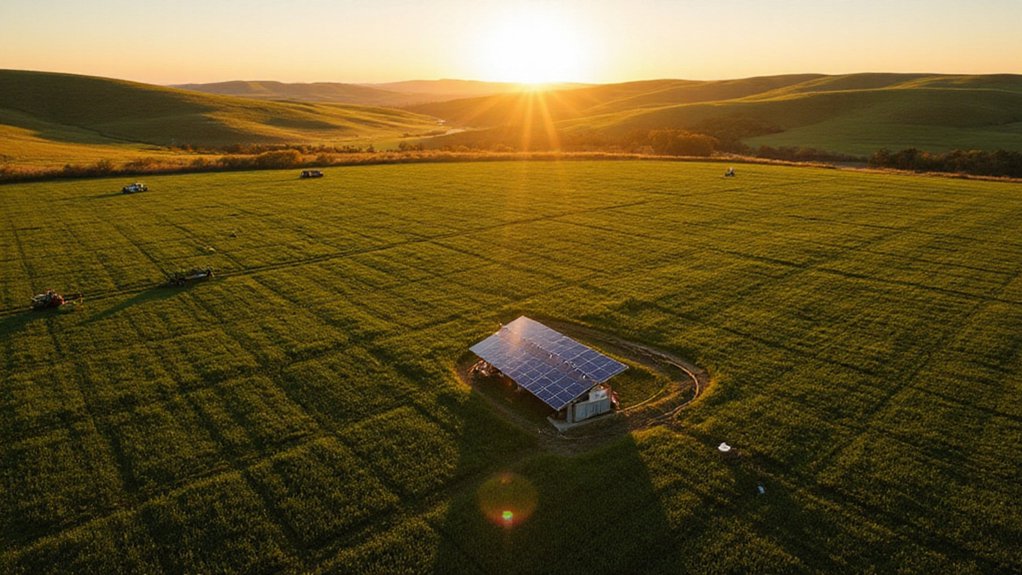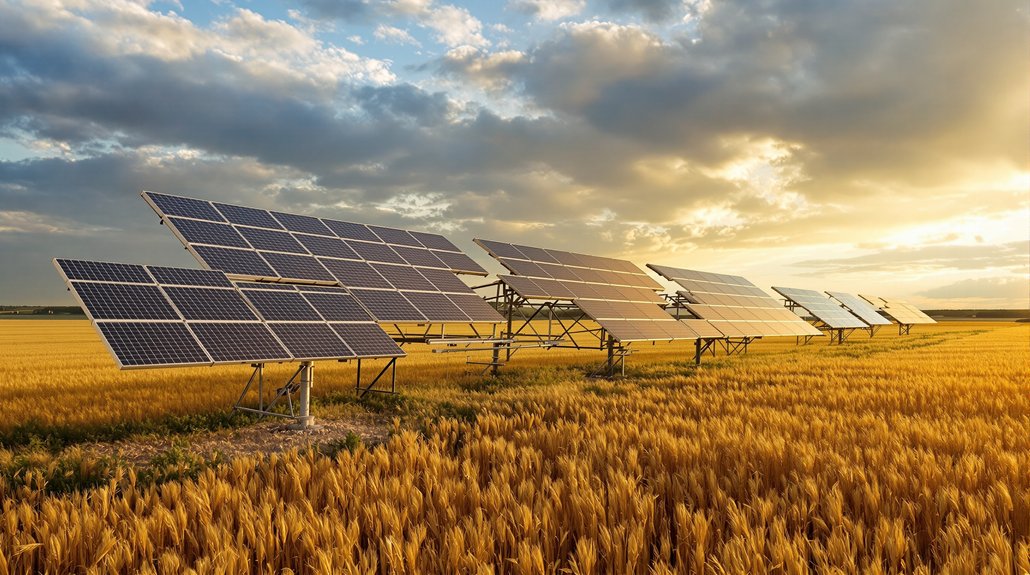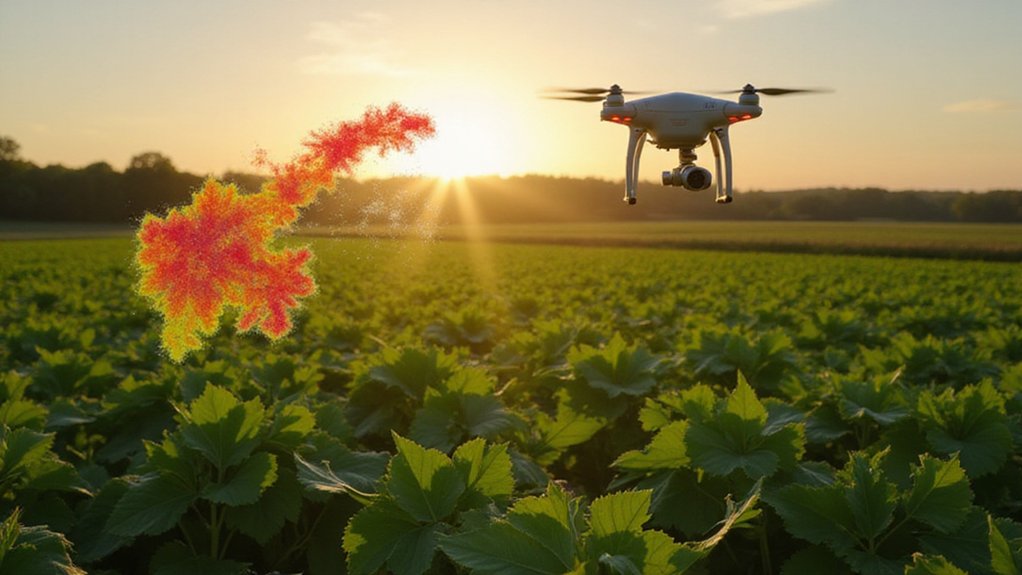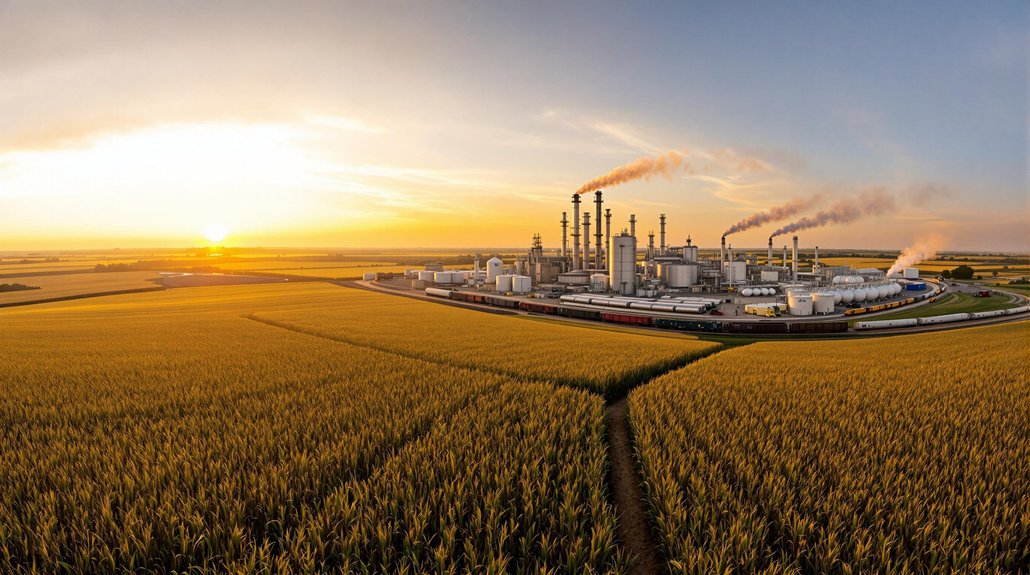While Arkansas farmers worry about losing their fields to solar panels, the actual numbers tell a different story. Solar installations currently occupy a whopping 0.2% of the state’s 13.7 million acres of agricultural land. That’s right—less than one-fifth of one percent. The sky isn’t falling after all.
Utility-scale solar projects take up between 22,351 and 35,778 acres, based on projections through 2026. Arkansas has climbed to 20th nationally in solar installations, jumping from 8th place in 2024. With 2,771 megawatts of installed capacity, the state’s solar panels generate enough juice to power about 323,943 homes. Not bad for a tiny fraction of farmland.
The panic about disappearing farms seems overblown. Less than 0.05% of agricultural land nationwide has been lost to solar development as of 2020. Even in Arkansas counties with higher-than-average solar usage, farmers still have plenty of dirt to work with. More than 70% of utility-scale solar systems built between 2012 and 2020 went up in rural areas, yet farming continues without major disruption. The shift to renewables is essential as they can potentially supply 95% of electricity needs by 2050 according to industry projections.
Here’s where it gets interesting. Even if Arkansas went solar-crazy and doubled its power generation capacity with panels, it would need only 83,400 to 133,500 acres. That extreme scenario would still use less than 1% of agricultural land. The current growth rate suggests farmers can sleep easy—their fields aren’t vanishing under silicon wafers anytime soon.
Solar developers aren’t exactly grabbing prime farmland either. They look for specific conditions: good sunlight, proximity to power infrastructure, and suitable terrain. Often, they pick less productive agricultural lands. Some installations even require natural visual barriers to keep the scenery pretty. Meanwhile, some farmers are discovering agrivoltaics opportunities, combining solar panels with sheep grazing or beekeeping to maximize land productivity.
The money angle matters too. Solar installations pump additional income into farmers’ pockets and create rural jobs where agriculture has long been king. Tax revenues from these projects benefit agricultural communities. Some setups allow dual use—farming and energy production on the same land. Farmers who lease their land for solar development can earn between $450 to $2,500 per acre annually, providing stable income over typical 30-year contracts.
Arkansas’s 0.2% solar footprint mirrors other agricultural states’ experiences. The renewable energy shift is happening, but it’s not steamrolling America’s farmland. Farmers can keep doing what they do best while solar panels quietly do their thing on a tiny slice of the terrain.
References
- https://www.uaex.uada.edu/media-resources/news/2025/may/05-29-2025-ark-solar-ag-footprint.aspx
- https://bioengineer.org/solar-power-system-installations-affect-less-than-1-of-agricultural-land-in-arkansas/
- https://www.uaex.uada.edu/publications/pdf/FSA1105.pdf
- https://seia.org/state-solar-policy/arkansas-solar/
- https://www.lifetechnology.com/blogs/life-technology-technology-news/solar-power-system-installations-impact-less-than-1-of-agricultural-land-in-arkansas








